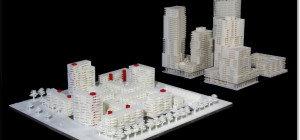 If you are attempting to build a structure from metal, you’ll probably need to do a little welding before you’re through. Welding is a means of tightly joining two pieces of metal together without the need for adhesive or holding structures. While there are a myriad of different welding methods, the basic process involves using a heat source to melt two metals together. For this raw material, welding is the best way to ensure a dependable and strong bond.
If you are attempting to build a structure from metal, you’ll probably need to do a little welding before you’re through. Welding is a means of tightly joining two pieces of metal together without the need for adhesive or holding structures. While there are a myriad of different welding methods, the basic process involves using a heat source to melt two metals together. For this raw material, welding is the best way to ensure a dependable and strong bond.
The Differences: Brazing, Soldering and Welding
In many cases, welding is confused with soldering and brazing. While all of these processes are very similar, they serve extremely different functions. Soldering is an electrical connection utilizing solder, a thin alloy wire. This substance is melted on top of two metals, likely wires, and it serves as a bridge for electrical impulses. The terminals remain intact and generally unchanged after the soldering process. These connections are not meant to withstand great pressure or force like welding joints. Instead, you’ll find them in electronic circuits and computer panels.
Brazing, like welding, utilizes high temperatures to melt metal joints together. The process uses filler, like solder, to join the metals in a fashion similar to standard adhesives. However, unlike soldering, the wires or metal pieces are melted and changed to ensure a secure binding. Think of brazing as a cross between soldering and welding. The procedure aims to create a reliable mechanical joint.
Standard Equipment
Welding equipment may vary depending on the exact method used, but all welders need a few key pieces of machinery and protective gear. To cut and smooth metal pieces, welders will likely have both a chop saw and an angle grinder. Since welding often involves joints and right angles, welding professionals will have a handy square and tape measures. Additionally, welders will likely have a chipping hammer. If you’re thinking about taking up welding to enhance your skills or complete a fun metal project, make sure you buy metal and have all the proper materials.
Because welding involves molten metal, sparks and blow torches, proper protective gear is critical for safe welding operations. Welders will have safety glasses and particle masks securely fitted under an auto-darkening helmet. The helmet is specifically designed to shield the eyes from excessively bright sparks and flames. To cover the upper body, welders will don thick leather capes. The last essential element is a pair of welding gloves to guard against nicks and burns.
Filler and Flux
When welding, certain metals and joints may call for filler and flux to ensure a secure connection. Filler serves a purpose similar to solder: It seals any gaps between metals. This filler is simply an extra piece of compatible metal from a welding rod. Flux, on the other hand, is a nonmetallic chemical that inhibits the development of nitrides and oxides. Formation of oxides and nitrates will weaken the bond between metals.
Torches and Arc Welding
Most welding methods call for heat to join two metals, but the source of heat varies. Convenient and lightweight, the oxyacetylene gas torch is one of the most popular welding heat sources. An intense flame is produced via burning acetylene in oxygen. However, this heat source isn’t entirely cost effective because the fuel comes in expensive cylinders. Arc welding uses an electrical power source. An electrode is attached to a potent and high current power supply and directed at the metal pieces. The electrode produces an ultraviolet spark that melts the metals together, warranting the use of an auto-darkening helmet.
If you’re thinking about taking up welding to enhance your skills or complete a fun metal project, make sure you have all the proper materials. With sparks and hot metal around, you want to be sure you use tools and protective gear you can trust.







